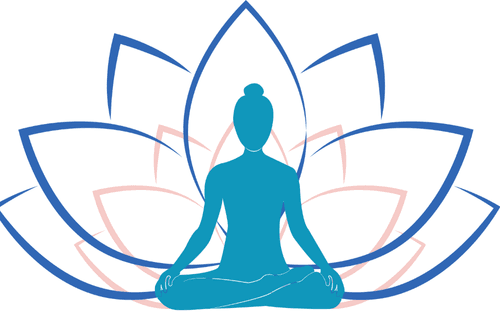Harnessing Mindfulness for Stress Management: A Comprehensive Guide

Understanding Mindfulness and Its Benefits
Mindfulness, derived from ancient contemplative traditions, particularly Buddhism, is the practice of maintaining a moment-by-moment awareness of our thoughts, feelings, bodily sensations, and surrounding environment. It encourages individuals to observe their experiences without judgment, fostering a sense of acceptance. In recent years, mindfulness has gained considerable attention in the field of psychology, especially as a method for stress management. Its ability to cultivate a focused yet relaxed state opens the door to a variety of psychological and physiological benefits.
One significant benefit of practicing mindfulness is the reduction of anxiety. Several studies indicate that engaging in mindfulness exercises can lead to decreased levels of anxiety, which is often a pervasive aspect of chronic stress. By training the mind to focus on the present, individuals can learn to step back from their worries about the future or regrets from the past, effectively diminishing the emotional weight they carry. Additionally, mindfulness enhances emotional regulation by increasing awareness of one’s emotional triggers and responses, allowing for more effective coping strategies.
Further, scientific research highlights a variety of physiological benefits linked to mindfulness practices. Regular engagement in mindfulness meditation has been shown to lower blood pressure, enhance immune function, and reduce stress hormone levels like cortisol. The mind-body connection illustrated through these practices emphasizes that improving mental well-being can lead to positive physical health outcomes.
Mindfulness is not merely a trendy practice but a scientifically validated approach for promoting overall well-being. Its integration into therapeutic settings, demonstrated through numerous studies, supports its effectiveness for those dealing with stress. This comprehensive understanding of mindfulness and its multifaceted benefits lays the groundwork for its application as a powerful tool for stress management in our daily lives.
Breathing Exercises for Stress Relief
Breathing exercises serve as fundamental strategies for managing stress, offering individuals a direct method to regain calmness and enhance focus in challenging situations. The practice of deep belly breathing, also known as diaphragmatic breathing, involves taking slow, deep breaths that engage the diaphragm. To perform this exercise, find a comfortable seated position or lie down on your back. Place one hand on your chest and the other on your belly. Inhale deeply through your nose, allowing your belly to rise while keeping your chest relatively still. Hold the breath for a moment, then exhale slowly through your mouth, feeling your belly fall. Repeat this cycle for five to ten minutes, focusing on the rhythm of your breath to foster a sense of tranquility.
Another effective technique is the 4-7-8 breathing method, which is useful in promoting relaxation. Start by sitting or lying comfortably. Close your eyes, then inhale deeply through your nose for a count of four. Hold your breath for a count of seven, focusing on the stillness. Finally, exhale completely through your mouth for a count of eight. This sequence should be repeated four times, gradually increasing repetitions as you become more comfortable with the practice. The timed intervals help slow down the heart rate and can be particularly beneficial during moments of heightened stress.
Box breathing is yet another beneficial technique, often used in high-pressure situations. To practice box breathing, envision a box where each side represents a phase: inhale for four counts, hold for four counts, exhale for four counts, and hold again for four counts. This structured approach can significantly enhance concentration and reduce anxiety. To incorporate these exercises into your daily routine, set aside a few minutes each morning or before stressful events, ensuring that you have a designated time to focus solely on your breath and the present moment. Utilizing breathing exercises regularly can cultivate a profound sense of calm that carries through life’s inevitable stressors.
Grounding Techniques to Anchor Your Mind
Grounding techniques serve as effective tools for individuals seeking to reconnect with the present moment while alleviating feelings of stress and overwhelm. One widely-used method is the 5-4-3-2-1 technique, which utilizes sensory awareness to bring individuals back to the here and now. This method prompts practitioners to identify five things they can see, four things they can touch, three things they can hear, two things they can smell, and finally one thing they can taste. By engaging the senses, practitioners can displace anxiety with tangible experiences, leading to immediate relief from overwhelming emotions.
Additionally, the use of sensory awareness can further enhance the grounding experience. Practices such as focusing on the feel of the ground beneath one’s feet or noticing the sensation of air on the skin can encourage a mindful connection to the environment. This approach encourages individuals to engage fully with their surroundings and reinforces their presence in the moment, allowing anxiety to become less pronounced.
Another beneficial grounding approach involves the creation of a grounding object. This could be a small stone, a piece of fabric, or any item that provides comfort and reassurance. Carrying this object serves as a focus during stressful moments, acting as a tactile reminder of one’s intention to remain present. In moments when anxiety begins to rise, holding or touching the grounding object can bring about a sense of security and calmness.
It is crucial for individuals to personalize these grounding techniques according to their preferences and needs. Tailoring practices to fit personal comfort can enhance their effectiveness. By experimenting with these methods, individuals can seamlessly incorporate grounding practices into their daily routine, promoting greater mental clarity and emotional stability.
Developing a Mindfulness Practice: Tips and Resources
Establishing a mindfulness practice is an effective strategy for managing stress, and with consistent effort, individuals can enhance their sense of well-being. To start integrating mindfulness into daily life, consider adopting a routine that promotes regular practice. Setting aside a specific time each day, even if it’s just five to ten minutes, can help to establish a habit. Early morning or before bedtime are often ideal for creating a peaceful environment conducive to reflection.
Utilizing guided meditations is another valuable resource for those new to mindfulness. Numerous platforms offer free and paid guided sessions, which can be instrumental in helping individuals focus and minimize distractions. These sessions often range from short practices to longer, more immersive experiences, catering to different schedules and preferences. While selecting a guide, look for those that resonate with your personal values and experience level, ensuring that the practice remains enjoyable and beneficial.
In addition to guided meditations, mindfulness apps can serve as excellent companions in your journey. Applications like Headspace, Calm, and Insight Timer provide structured programs, reminders, and a community of like-minded individuals. They can also track your progress, guiding you in establishing a sustainable routine. Utilizing these technological tools can enhance accountability and provide a sense of achievement as you deepen your practice.
For those who wish to explore mindfulness further, a variety of resources are available, including books, workshops, and online courses. Reading literature focused on mindfulness can offer insights into the philosophy and practice, while workshops and courses can provide hands-on experiences and expert guidance. Creating a supportive network with others interested in mindfulness can significantly enhance one’s dedication to stress management.
By incorporating these tips and utilizing a variety of resources, individuals can foster a more mindful existence, effectively combating stress and promoting overall well-being.





